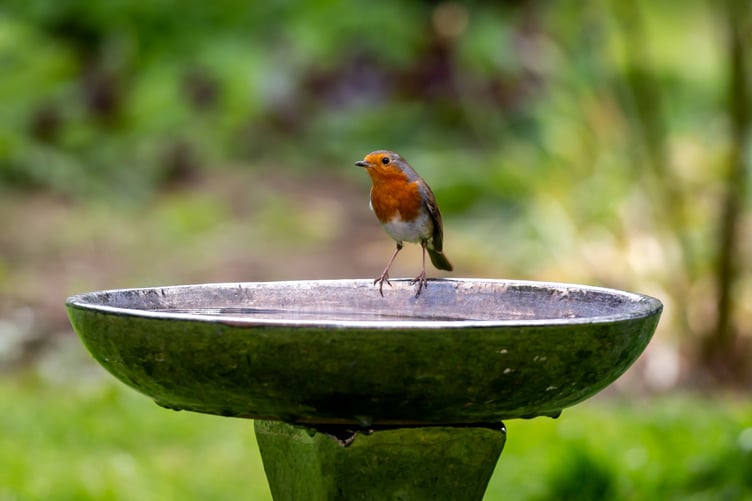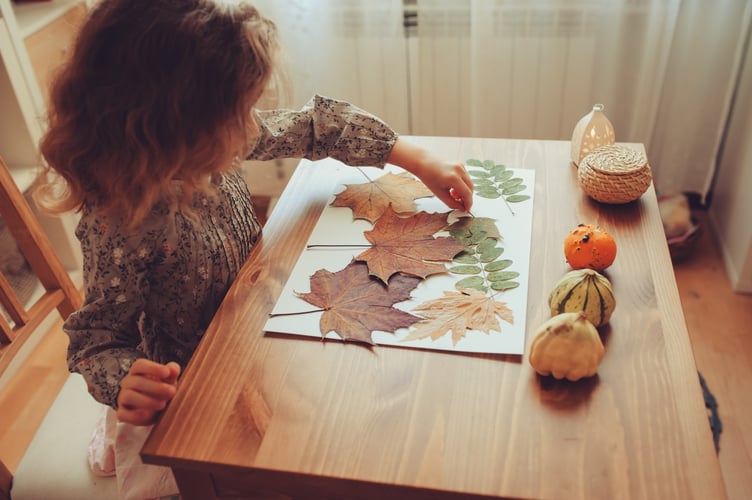AS the days get shorter, and trees start to shed their leaves and transform in colour, Danielle Simpson, Sales Director at UK housebuilder Pye Homes, shares her guide on keeping your garden maintained this autumn season, as well as fun ideas for keeping little green fingers entertained this season.
Arts and crafts
When leaves transform into beautiful shades of browns and oranges and fall to the ground it provides the perfect opportunity for families to get crafty with a variety of activities including:
- Leaf rubbing; choose several different coloured crayons, some thin paper and a variety of textured leaves. Place a leaf bottom side up under a sheet of paper before rubbing a crayon over the surface of the paper directly over the leaf, making sure to keep the leaf in place, and you’ll see the textured art come to life.
- Preserving beautiful leaves; collect your favourite fallen leaves, and place them in between the pages of a book, ensuring they’re dry before closing the book, placing a heavy object on top to add pressure and leave for a couple of days. Your leaves will stay perfectly preserved for years to come and can be used for seasonal cards, artwork or seasonal posters that will no doubt find their pride of place on family fridges or bedroom walls!
- Leaf collages; create a piece of colourful art when you glue dry leaves to a canvas or paper.
Autumn gardening
Preparing your garden for the colder months ahead is vital to a healthy garden ready to thrive in the spring, so be sure to prune your garden and shield your delicate plants from chilly nights.
.jpeg?trim=0,0,0,0&width=752&height=501&crop=752:501)
The autumn season presents an ideal time to plant your bulbs and seeds ready to bloom in the spring. Flowers such as daffodils, crocus, hyacinths, alliums, and tulips are great to plant at this time, along with vegetables such as broad beans, garlic, onions and shallots, cabbage, spinach and lettuce, and fruits such as apples, pears, currants and gooseberries.
Wildlife
You may see a lot more of Mother Nature’s little creatures in your garden during warmer months, but even during the colder periods they’re still out there! So be sure to maintain your garden space to welcome these into your outdoor spaces.

Just a few simple things you can do to welcome wildlife include:
- Building a bug hotel; this can be created in a number of fun ways with the family using basic materials. With an old wooden crate, box or pot, stack materials such as drilled logs and bricks, sticks, dry leaves, pinecones and bark to create a cosy space for critters to nestle in. Top tip: ensure your bug hotel is built on even ground and has easy access to welcome guests.
- Creating a bird feeder; this activity can be as easy as coating a pinecone in peanut butter and bird seed and attaching it to a piece of string before hanging it on a tree branch to create your very own bird cafe!
- Making a hedgehog house; these nocturnal creatures seek out sheltered spaces to sleep and hide from predators, so by creating a pile of logs or leaves in a quiet corner, your garden hedgehogs will have a safe haven. And why not give your local hedgehog an upgrade when you fill an untreated wooden box with dry straw and leaves?
- Maintaining your bird bath; if you don’t already have a bird bath, you can create your own one by simply placing a shallow dish (under 10cm deep) on a pedestal of bricks or on a wall. Be sure to place some small pebbles and stones in the dish to give birds somewhere to perch when they land for a bath or drink.
Pumpkin fun
Would it really be autumn if you didn’t decorate a pumpkin?
Whether you’re carving spooky faces, painting fun creations on the surface of the pumpkin, or dressing one up for Halloween, don’t toss away your pumpkin seeds.
Did you know that it’s estimated that over 18,000 tonnes of pumpkin pulp is thrown away each year in the UK around the Halloween period? So once the fun is over, be sure to repurpose your pumpkin seeds.
You can clean, dry and store your seeds ready to plant after the last frost, add them to your compost pile, feed the local wildlife such as birds and deer, or even clean, dry, season and roast them for a healthy snack.





Comments
This article has no comments yet. Be the first to leave a comment.